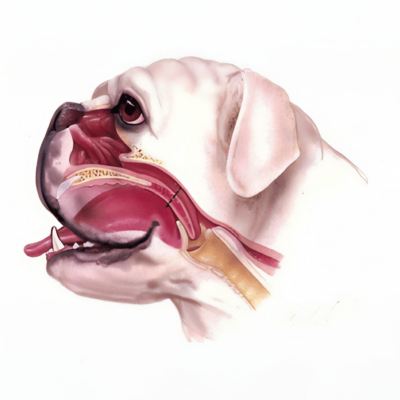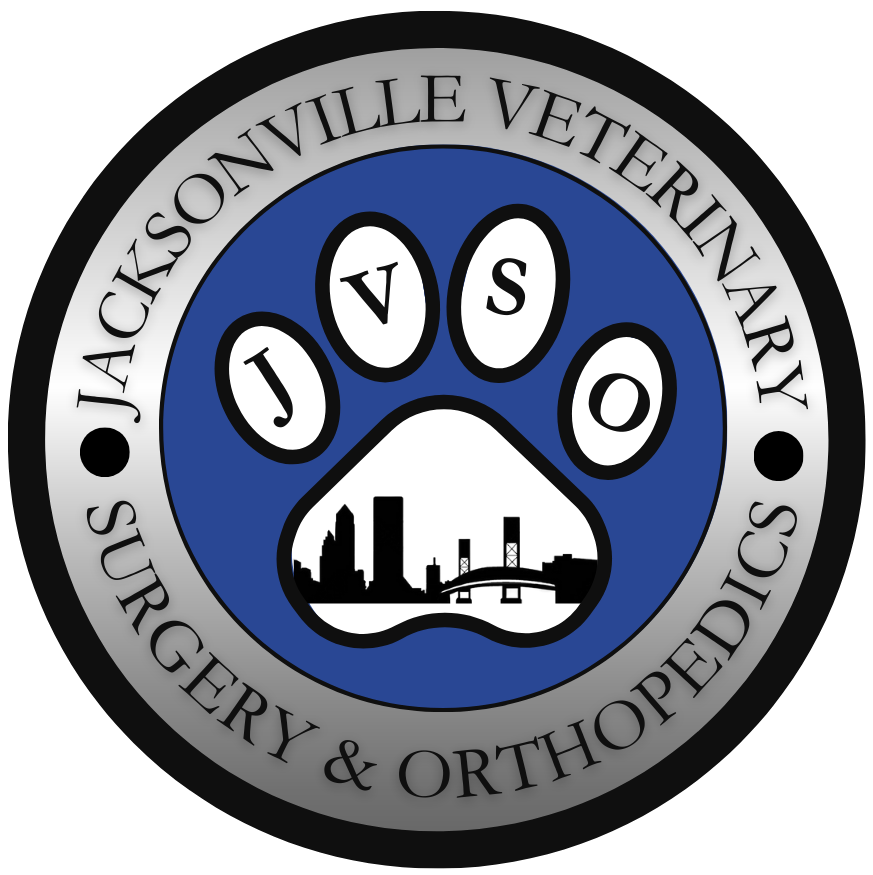Welcome To
Jacksonville Veterinary Surgery & Orthopedics
We are committed to supporting you and your pet every step of the way. If you have any questions or require further assistance, don't hesitate to reach out to our team. Your pet's well-being is our top priority!

Explore our curated list of resources to ensure your furry friend receives the best possible support and assistance.
Financial Assistance
- CareCredit: When unexpected veterinary expenses arise, CareCredit offers flexible financing options to help you manage costs. Visit www.carecredit.com to learn more.
Local Emergency Veterinary Services
- PURE Veterinary Emergency: When emergencies strike, PURE Veterinary Emergency offers prompt and compassionate care for your pet. Learn more at www.pureveter.com.
- Focused Petcare: For focused and attentive emergency veterinary services, trust Focused Petcare to provide expert care when it matters most. Explore their services at www.focusedpetcare.com.
- Vet I Care: Vet I Care prioritizes your pet’s well-being with their dedicated emergency veterinary services. Reach out to them at www.vet-i-care.com for immediate assistance.
- Robinson 24 Hour Veterinary Hospital: With round-the-clock care, Robinson 24 Hour Veterinary Hospital ensures your pet receives the attention they need, whenever they need it. Visit www.r24vh.com for more information.
Pet Insurance
- Trupanion: Ensure your pet’s health is always a priority with Trupanion’s comprehensive pet insurance plans. Visit www.trupanion.com to get started.
Mobility Aids and Support
- Help Em Up Harness: For pets needing assistance with mobility or recovering from surgery, Help Em Up Harness provides comfortable and reliable support. Discover more at www.helpemup.com.
- Movoflex Soft Chews: Enhance your pet’s joint health with MOVOFLEX® Soft Chews by Virbac. These tasty chews promote flexibility and mobility. Find them at virbac.com.
- DogLeggs: Protect your pet’s limbs and aid in their recovery with DogLeggs’ innovative products. Explore their range of supportive gear at www.dogleggs.com.
- Lick Sleeve: Designed for dogs needing leg protection, Lick Sleeve offers a sure-fit design for comfortable wear. Safeguard your pet’s limbs with Lick Sleeve’s wearable protection. Discover more at www.licksleeve.com.
Ready To Make An Appointment?
Comprehensive Veterinary Care Starts Here.
Rehabilitation Videos
Here Are Some Helpful Videos On Canine Rehabilitation After Surgery. Rehab Helps Speed Healing And Recovery.
Anesthesia: Is It Safe?
We understand surgery can be scary and we make every effort to make the process as safe as possible. However, there is always a risk anytime an animal is given drugs for surgery, and we work hard to minimize the risks associated with general anesthesia. It is important to let your veterinarian know of any pre-existing health conditions, all current medications, and follow preoperative fasting instructions. Prior to surgery, your pet will receive a thorough physical exam by your veterinarian. Diagnostics such as bloodwork, radiographs (X-rays), and ECG may be performed based on individual risk factors.
General anesthesia makes your pet unconscious, so they won’t move or feel pain. While under anesthesia, your pet will receive monitoring and care comparable to what you’d receive. This may include intravenous fluids and/or medications to support their circulation and blood pressure; an endotracheal tube inserted into their trachea (windpipe) to deliver the anesthetic gas and provide oxygen to their lungs; pulse oximetry to measure the oxygenation of their blood; blood pressure monitoring; end tidal CO2 monitoring, temperature monitoring and warming blankets to prevent hypothermia (low body temperature); and electrocardiography to monitor their heart rate and rhythm.
Although you can never be 100% certain of how your pet may react to anesthesia, taking advanced precautions and working with a trained veterinarian to make the best choice for your pet will help keep them as safe as possible.

What About Bulldogs?
Bulldogs and all brachycephalic (smoosh-faced) dogs present special challenges with anesthesia. This is due to a combination of conformational changes, including an elongated soft palate and narrow trachea, that create additional risks before and after anesthesia.
Our team takes special precautions with all brachycephalic dogs, including pre-oxygenation, additional sedation when needed, maintaining endotracheal intubation for an extended period during recovery and prolonged hands-on monitoring.

At JVSO, we take managing postoperative pain very seriously. We proudly use Nocita in most surgical procedures to provide long-acting analgesia as part of a multimodal approach to pain management.
Questions? Get In Touch!
Comprehensive Veterinary Care Starts Here.
Frequently Asked Questions
We know you have a lot of questions. Take a look here for answers to the most common ones.
Before Surgery
How do I get my dog ready for surgery?
Most of the time, we will advise you to stop feeding your dog by 10 p.m. the night before surgery. Water is fine until drop off. Medications should not be given the morning of surgery unless we give you different directions. If you want to give your dog a bath, we suggest doing this 1-2 days before surgery. For orthopedic surgeries, the skin must be clean and free of any signs of an active pyoderma (skin infection).
Is anesthesia safe?
Yes. General anesthesia is very safe for most pets. All pets will have a comprehensive physical exam and bloodwork performed prior to surgery. Most anesthetic protocols are standardized, but adjusted to individual patient needs. All patients are monitored by experienced technicians throughout the procedure and recovery. We use modern monitoring equipment to keep track of heart rate, pulse oxygenation, EKG, blood pressure, end-tidal CO2 and body temperature.
What is a board certified veterinary surgeon?
An ACVS Diplomate is a veterinarian who has undergone additional training after veterinary school and has been certified as a specialist in surgery by the American College of Veterinary Surgeons (ACVS). Diplomates of the ACVS are often referred to as board-certified surgeons.
After Surgery
What if I need to reach you outside of normal business hours?
If your pet had a procedure with us, please read the bottom of your discharge instructions for how to connect with someone to address your concerns.
If you are inquiring about a consultation or appointment, you can:
- Leave a message at (904) 994-4690
- Send an email to frontdesk@jaxvetsurgery.com
- Click this link: https://jaxvetsurgery.com/contact-us/
A member of our staff will respond to your inquiry during normal business hours on the next business day.
While we always strive to provide excellent service, we are not available for after-hours consultations, surgeries or scheduling. All services are conducted during our regular business hours. If you need urgent assistance or emergency care after hours, we encourage you to contact one of the local emergency clinics.
You can view our list of recommended Local Emergency Veterinary Services here.
Do I need to keep the e-collar on at all times?
You need to keep an anti-lick device on your pet at all unsupervised times. This includes an Elizabethan collar (e-collar), inflatable e-collar or Lick Sleeve. It only takes a second for your pet to lick open their incision, which can result in infection along with additional surgery and costs.
How long after surgery do I have to wait to bathe my dog?
Once the sutures have been removed and the incision healed, usually 10-14 days after surgery. For orthopedic surgeries, make sure you bathe your pet on an anti-slip mat or outside on the lawn to prevent accidental injury.
How long after surgery do I need to wait to have my dog groomed?
For most orthopedic procedures, we recommend waiting until after all follow up appointments are completed, typically around 6 weeks after surgery. For soft tissue procedures, dogs can usually be groomed once the sutures have been removed, typically around 2 weeks after surgery.
My pet has not had a bowel movement for a few days after surgery. Should I be concerned?
Anesthesia, pain medication and reduced activity can slow intestinal transit time. Let us know if your pet has not had a bowel movement within thee days of surgery. Often we will advise you to offer a small amount of canned, plain pumpkin to dogs (1 teaspoon for every 10 pounds of bodyweight) or Miralax (1/4 teaspoon in meals) to cats.
What should my pets incision look like and when should I worry?
The incision should look the same as when your pet returned home. A small amount of bruising and swelling are common the first few days post-op. This starts red then turns purple before going away. If the area around the incision is hot, painful or oozing, contact our office immediately.
Should I clean or apply any medication to the incision?
For most procedures, no incisional care is necessary, other than diligent monitoring and lick prevention. Cleaning or applying creams or ointments to the incision can do harm, leading to infections or healing problems. If your pet requires incisional care, this will be clearly outlined for you in the discharge instructions.
What does activity restriction mean?
Postoperative activity restriction allows for short (less than five minutes), controlled leash walks for elimination. Running, jumping and rough play can lead to problems healing or failure of the procedure. Your pet should be confined to a small room or crate when not directly supervised.
My dog had TPLO surgery and now has a swollen ankle. Is this normal?
Yes. Most dogs develop edema around their hock (ankle) 3-4 days after TPLO surgery. This is harmless and will go away in a few days. You can assist by gently massaging the limb below the incision and performing passive range of motion exercises, if your pet cooperates.
How long is recovery from TPLO surgery?
Full recovery takes around 12 weeks. The first six weeks are the most important since the bone is healing and dogs need to be tightly restricted in their activity to prevent complications. Weeks 6-12 allow for increased controlled activity and gradual return to normal. See our TPLO section for more information.
Do I really need take follow up radiographs?
Yes. If follow up radiographs were recommended, it is strongly advised you have these performed. This will help us to determine if and when your pet is healed and can return to normal activity.

